This article was co-authored by Melessa Sargent. Melessa Sargent is the President of Scriptwriters Network, a non-profit organization that brings in entertainment professionals to teach the art and business of script writing for TV, features and new media. The Network serves its members by providing educational programming, developing access and opportunity through alliances with industry professionals, and furthering the cause and quality of writing in the entertainment industry. Under Melessa's leadership, SWN has won numbers awards including the Los Angeles Award from 2014 through 2021, and the Innovation & Excellence award in 2020.
This article has been viewed 365,566 times.
Everyone's handwriting is unique, like a fingerprint. All you have to do is tweak your penmanship a little bit and you'll have beautiful and interesting handwriting. Beautiful writing is classy, tasteful, impressive, and attractive.
Steps
Understanding the Basics
-
1Look at a sample of your writing. Find a sample of your writing, anything from a grocery list to a handwritten story. You'll need to analyze it for your handwriting tendencies. This will help you focus on improving and embellishing the words. You particularly want to see if you write with a loose, relaxed and easy hand rather than a cramped, tight hand.[1]
- Determine what letters you naturally embellish. Which have curls and flourishes?
- Look at your spacing. Is it all over the place or are your letters more evenly distributed on the page?
- Look at the pen or pencil strokes you use. You'll want a mix of thin and thick strokes in your letters.
-
2Figure out which muscles you use. Writing with a looser more relaxed script will be determined by which muscles you use when you're writing. You don't want to write only with your hand or your fingertips. Beautiful writing comes when you use your whole arm and shoulder as you write.
- To determine this, write a paragraph as you normally would. Pay attention to which muscles you're using. This will tell you if you're writing too much with only your hand rather than your whole arm in a loose, relaxed manner.
- Your fingers are there to be the guides on the page, but they shouldn't be doing all the work, otherwise your writing will be cramped and tight.
- Your arm and shoulder should be moving, but not your wrist and fingers.
Advertisement -
3Pick your tools. You'll need to find the right writing utensil, and paper for your writing. Every person is different, although there are some general ideas about what is easier to write more beautifully with. For instance, a pen is typically better than a pencil because a pen will usually give you smoother lines.[2]
- Nicer paper (usually more expensive) rather than computer paper will make your handwriting better, because you won't have to deal with smudges and tears and bleeding ink. You can find some at a stationery shop.
- Moleskin journals can be very good for practicing beautiful writing in, because the paper helps your handwriting become smoother.
- People often use fountain pens rather than a cheap plastic ballpoint, because nicer pens have a better ink flow, but you could also use something like a calligraphy marker or Sanford elegant writer, which make nice variations in length and width of your letters because of the flat tip. They also tend to have bold colors.
-
4Slow down. Fast handwriting is choppy, small, and has a great amount of applied pressure. Write slowly and gracefully with slow, light marks. You will have smoother pen-strokes and more consistent lines and curves. Make sure you are never straining your hand when writing or else you are pressing down too hard.
- Write as if your hand is moving through water.
-
5Practice. As with anything important, you will have to practice your beautiful writing before you will be confident in it.[3] Write as often as you can, paying attention to how you're writing and what muscles you're using.
- Practice writing on lined paper to learn spacing. Spacing between letters and between words (you want it to be pretty uniform) is incredibly important for creating beautiful handwriting.
- Doodle constantly. Doodle on the margins of notebooks, while you're waiting for the bus, while you're on the phone. It will help you relax and get accustomed to your more beautiful writing.
Using Cursive
-
1Start with the alphabet. Grab one of those old cursive practice books that you had to use in elementary school and start practicing each letter in the alphabet. Just remember that everyone's writing is distinctive, so your handwriting will be cursive (and attractive) it will be unique to you.
- You want to make sure that your letters are evenly spaced, so practice on lined paper so you can see the spacing.
- There are lots of free cursive worksheets and workbooks, either on the internet or in your local library.
-
2Hold your writing utensil properly. The best way to write cursive is to put the writing utensil between your forefinger and your middle finger, with fingertips and thumb place near the pen or pencil's tip.
- This position helps to alleviate the pain in forearm, wrist, and thumb.
-
3Learn connections. Cursive is basically all about the connections between letters. It is supposed to be used as a rapid method of writing. As such it comes from the Latin word "currere" which means "to run" and so cursive translates as "a running hand." Keep that in mind when you're forming the connections.[4]
- The connections are simply the "air" between the letters when you would normally lift your writing utensil.
- Make sure to close gaps on the tops of words. If they aren't closed it will be difficult to tell if a lowercase letter is an "a" or a "u."
Using Calligraphy
-
1Make sure you have the right position. This means that your feet are firmly on the floor, you are comfortable and your back is straight. It also means that you need to have the right pen hold.[5]
- The pen should sit between your first two knuckles, gripped by your thumb and first finger. It should rest against the middle finger.
- For the proper position of the pen you need to make sure that you're holding it at a 45 degree angle. To test this, draw a right angle (90 degrees) with a pencil. From the corner of the angle slide your pen upward cutting the right angle in half. It should be a thin stroke.
-
2Choose the proper tools. You will want to make sure that you give the appearance of a weighted line, meaning that your strokes appear thick and thin, as needed. To do this you'll need to pick the pens and paper and ink that work best for you.
- Broad edge writing tools that work well for calligraphy are markers, fountain pens, staff with inserted nibs (tips), brushes, quills, or reeds.
- You will want paper that doesn't bleed ink through. You can practice on regular notebook paper. Check the cotton content of paper, because papers with a cotton content to give a crisper line. Of course you can always find paper specially for calligraphy and if you have a calligraphy set it often comes with appropriate paper.
- In terms of inks, you want to stay away from india drawing inks, because the lacquer in them has a tendency to rust the nibs of pens and to clog pens. It's better to find a water soluble ink.
-
3Set up your paper properly. This means understanding where the lines go so that your calligraphy has uniformity of appearance. You'll need to set a nib height, which can be anything, but the 15th century italic has a height of 5 nibs, which will be used in the example of proper lines.
- Baseline is the writing line that all letters sit on.
- Waistline is the line above the baseline, which changes according to the x-height of the letter (in this case, 5 nibs above baseline).
- Ascending line is the line that all ascending letters hit. It should be 5 nibs above the waistline (or whichever nib length you're using). Ascending letters are the letter like a lowercase "h" or "l."
- Descending line is the line that descending letters hit. It should be 5 nibs below the baseline. Descending letters are the ones like a lowercase "g," or "f."
-
4Practice. You will, of course, need to practice the letters of your chosen calligraphy style, so that you become accustomed to them, but you'll also need to practice the angle of your writing utensil and the movement of your hand.
- Play around with your pen and ink. Make circles, tents, and lines as practice so you get the feel for the angle and the press of the pen.
Getting Creative
-
1Study other lettering. You can have beautiful handwriting that is based on one of the styles above, like calligraphy or cursive, but you can spice it up by using ideas from other creative sources.[6]
- Look at the works of artists, graphic designers, calligraphers and see how they use their words to create a distinctive style.
- Pay attention to things like billboards, signs, menus, posters for the styles of writing that they use.
- Look at patterns (like quilt patterns, drawing patterns) for inspiration on how to make your writing more interesting. You can even look at the shapes and lines of trees.
-
2Look at book hand, or ancient writing. For instance, look at the illuminated medieval manuscripts and the first Initials of writings which were often inhabited by figures, animals and historical scenes.
- There are lots of ancient scripts that could be interesting and creative to incorporate into your own writing style. Check out Ancient Egyptian hieratic or hieroglyphic scripts or Norse runes.
-
3Use your handwriting in projects and gifts. Of course you can always write beautiful cards to be your friends and family, for holidays and birthdays and thank yous, but you can also use your handwriting in other projects.
- You could make a hand lettered ornament, by using a permanent type pen on a plain round ornament with words you have chosen.
- You could make a poster with the words of a poem or quote you like.
Community Q&A
-
QuestionHow do I write cursive beautifully and quickly?
 Community AnswerPractice, practice, practice. That's the best thing to do. Try sitting comfortably, with a suitable pencil or pen (whichever you prefer), and just write random words on paper. Do that in your usual handwriting, then below the words, write them neater and better. If that doesn't help much, try tracing words over and over with a pen. That way you'll get used to it.
Community AnswerPractice, practice, practice. That's the best thing to do. Try sitting comfortably, with a suitable pencil or pen (whichever you prefer), and just write random words on paper. Do that in your usual handwriting, then below the words, write them neater and better. If that doesn't help much, try tracing words over and over with a pen. That way you'll get used to it. -
QuestionWhich pen is the best to use?
 Community AnswerThis is up to you. Experiment by writing a few words with different pen and use the one or ones you like best.
Community AnswerThis is up to you. Experiment by writing a few words with different pen and use the one or ones you like best. -
QuestionHow can I write a pretty capital 's'?
 Community AnswerMake them very swirly, and make the ends curl.
Community AnswerMake them very swirly, and make the ends curl.
Warnings
- If you're cramping too much in your hand, you're probably writing too hard or in the wrong position. Try a few different positions to find the one that works for you.⧼thumbs_response⧽
References
- ↑ http://europeanpaper.com/blog/2012/09/07/how-to-write-improving-your-cursive-skills/
- ↑ http://matadornetwork.com/life/eight-easy-tips-to-improve-your-handwriting/
- ↑ Melessa Sargent. Professional Writer. Expert Interview. 14 August 2019.
- ↑ http://www.nytimes.com/interactive/2009/09/04/opinion/20090908_opart.html?_r=0
- ↑ http://calligraphyforbeginners.com/
- ↑ Doh, Jenny. Creative Lettering: Techniques & Tips from Top Artists. Asheville: Lark, 2013. Print.
About This Article
To write beautifully, start by gathering your tools, like a quality piece of paper that has a smooth surface and a fountain pen for proper ink flow. As you start to practice your writing, make sure you have proper spacing between letters and words and that you use a mixture of thick and thin lines. Additionally, gather inspiration on how to form you letters from geometrical patterns, nature, billboards, and menus. You can also look at medieval writings and hieroglyphics for creative ways to make your handwriting stand out! To learn how to use calligraphy, keep reading!
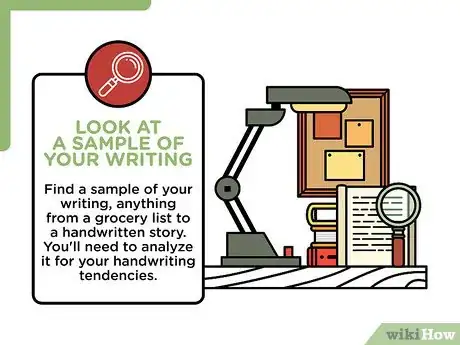
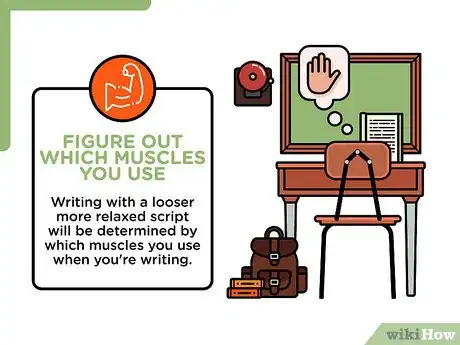
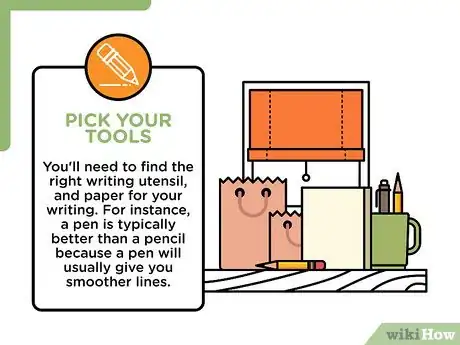
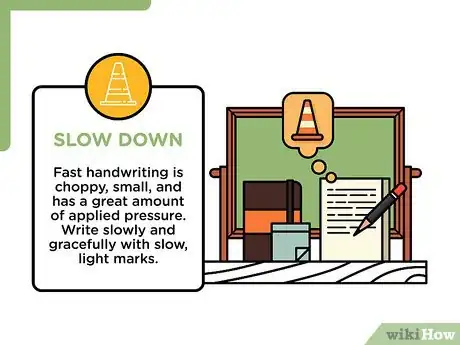
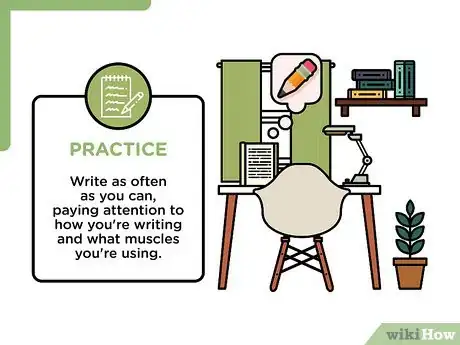



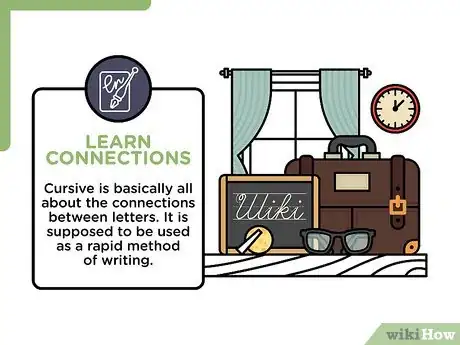
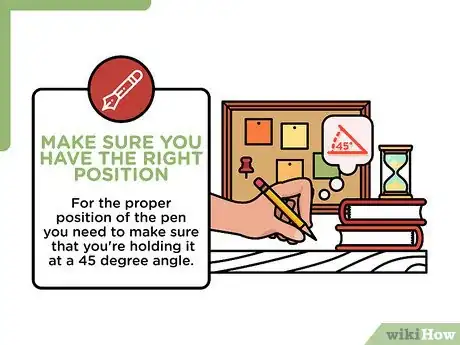
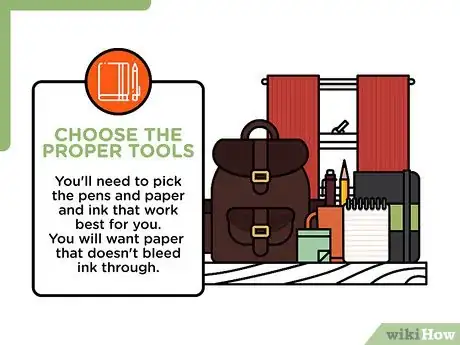
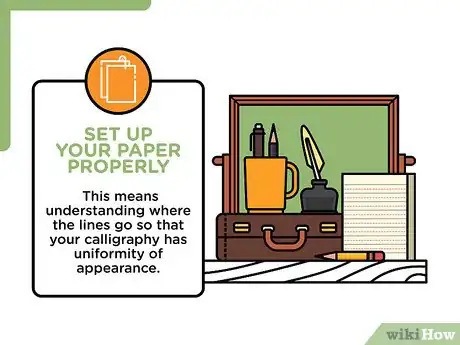
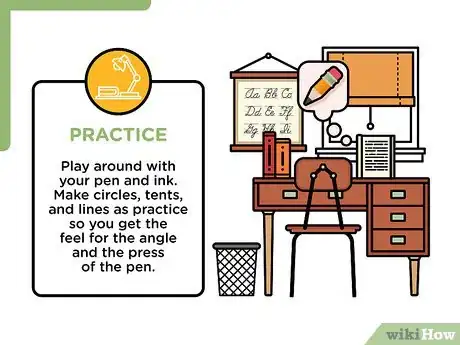
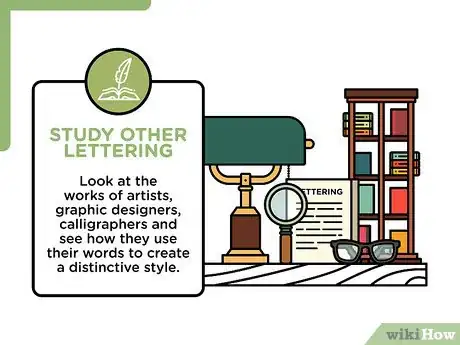
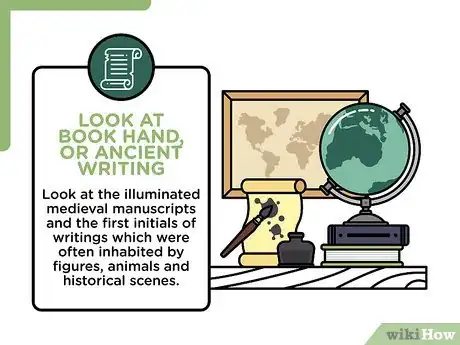

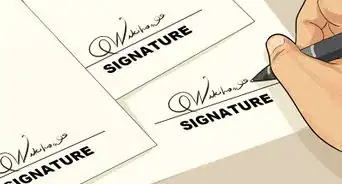
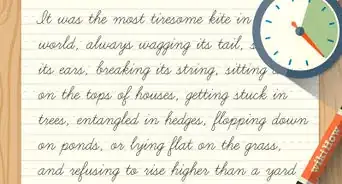
-Step-11-Version-3.webp)




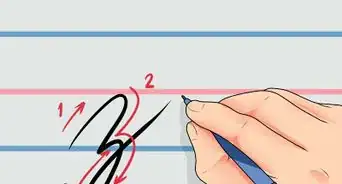
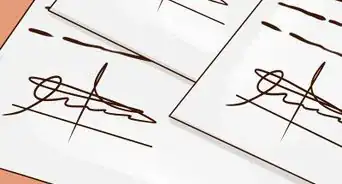
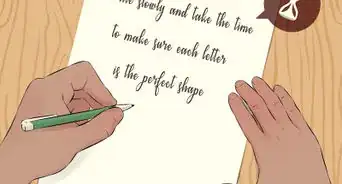
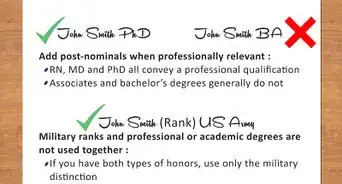

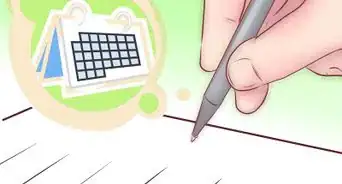










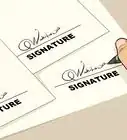
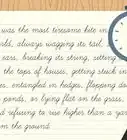

-Step-11-Version-3.webp)



































